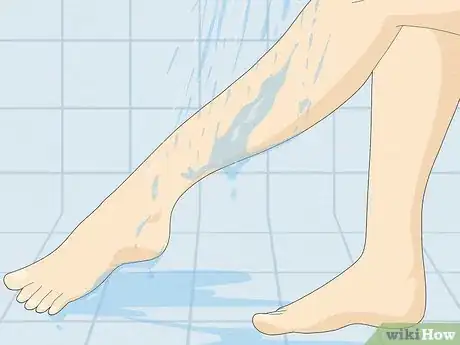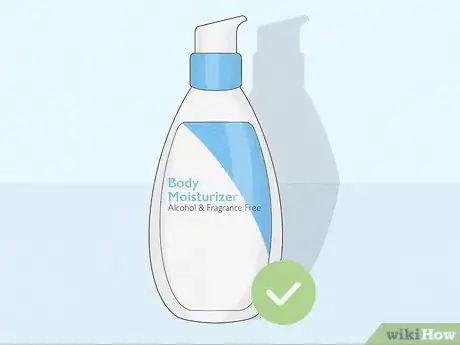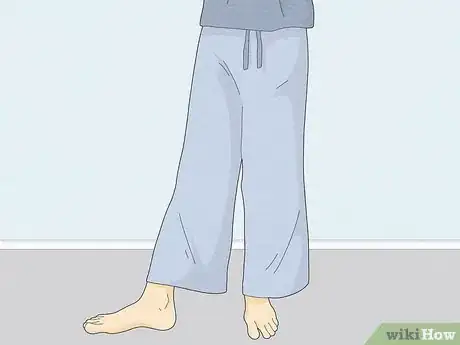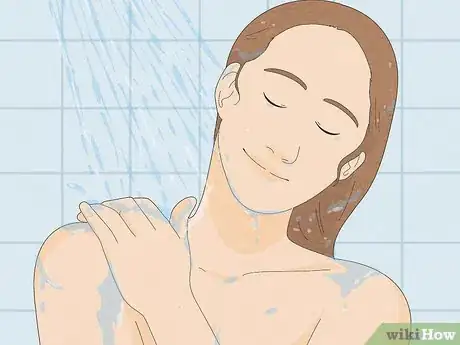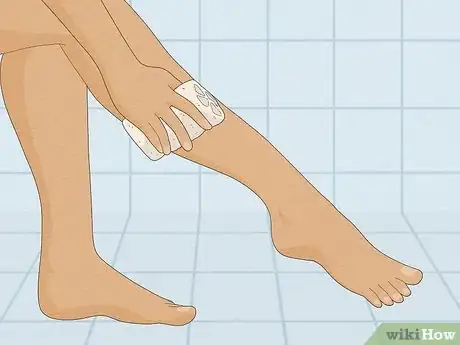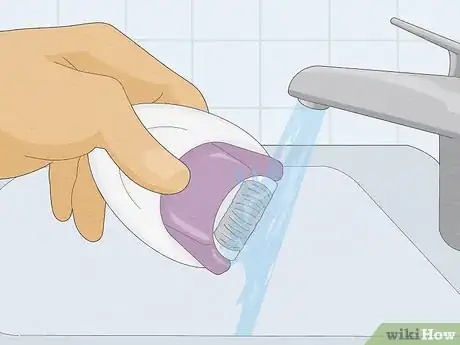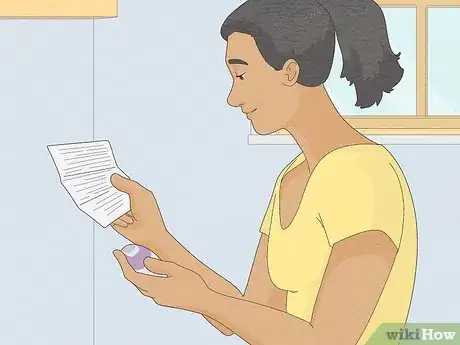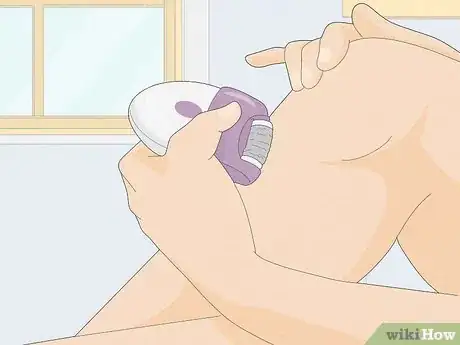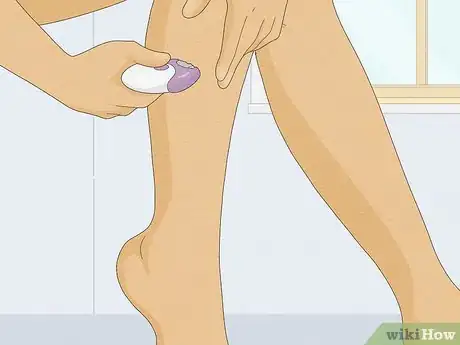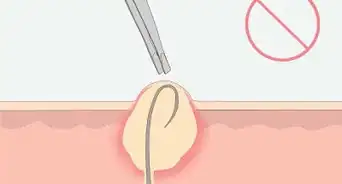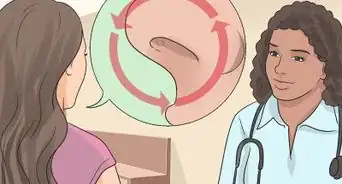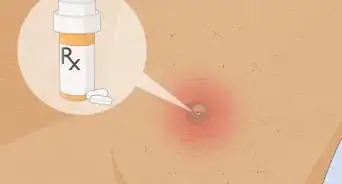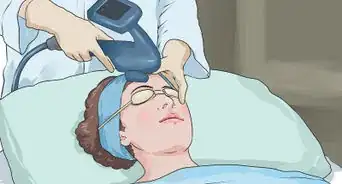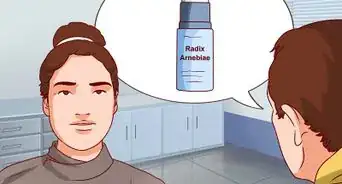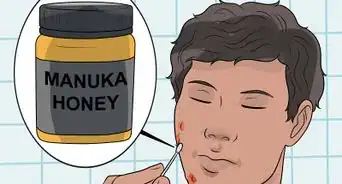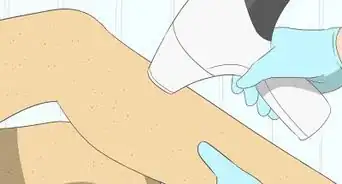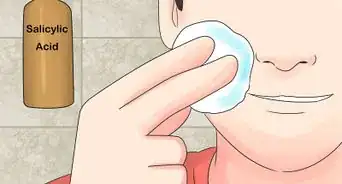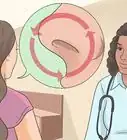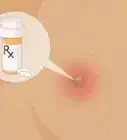This article was co-authored by Mohiba Tareen, MD. Mohiba Tareen is a board certified Dermatologist and the founder of Tareen Dermatology located in Roseville, Maplewood and Faribault, Minnesota. Dr. Tareen completed medical school at the University of Michigan in Ann Arbor, where she was inducted into the prestigious Alpha Omega Alpha honor society. While a dermatology resident at Columbia University in New York City, she won the Conrad Stritzler award of the New York Dermatologic Society and was published in The New England Journal of Medicine. Dr. Tareen then completed a procedural fellowship which focused on dermatologic surgery, laser, and cosmetic dermatology.
There are 7 references cited in this article, which can be found at the bottom of the page.
This article has been viewed 249,243 times.
Epilation removes body hair at its root, or follicle. Forms of epilation include waxing, plucking, and lasering. Every type of epilation comes with a risk of developing ingrown hairs. These can become infected and painful, creating an even bigger problem than the unwanted hair.[1] You can prevent ingrown hairs after epilation by prepping your skin, using proper techniques, and caring for your skin after the treatment.
Steps
Caring for Your Skin After Epilating
-
1Rinse your skin. Wipe or rinse off your skin when you’re finished. Use warm water to keep your pores open. This can clear away lingering hair and bacteria. It can also minimize the risk of developing ingrown hairs.[2]
-
2Soothe your skin with moisturizer. Exfoliation and epilation can dry out your skin. After rinsing off your skin, apply a non-comedogenic moisturizer. This can soothe newly epilated skin and keep dry skin from clogging your pores and hair follicles.[3]
- Moisturize twice a day to ease any redness or inflammation from epilation.
- Some waxing kits may include an antiseptic cream, which soothes, moisturizes, and protects your skin against potential infections.
Advertisement -
3Use gentle and nourishing products. Return to your skincare routine after epilation. Choose skincare products that are gentle as well as alcohol- and fragrance-free. They should also help moisturize your skin. This can ensure that you don’t irritate skin that is delicate from epilation.[4]
-
4Wear loose clothing. Avoid wearing tight clothing for a few days after you epilate. Tight clothes put pressure on your skin. This can keep hairs from growing properly and increases the risk of them being pushed back under the skin.[5]
Preparing Your Skin Before Epilation
-
1Cleanse your skin. Wash your skin or take a shower with warm water. Use a gentle soap to avoid irritation. This can minimize the risk of bacteria getting into pores and causing an infection.[6]
-
2Exfoliate your skin. Dead cells can build up on your skin and block the hair follicles. Use a gentle exfoliating product in the shower or bath to remove dead cells. This can reduce your risk of developing ingrown hairs. Use any of the following natural exfoliants twice per week:[7]
- Dry body brush
- Natural loofah
- Sugar and olive oil paste[8]
- Baking soda and water paste
-
3Steam hair follicles in the shower. Step into a steam room or take a steamy shower. The warmth will open up your pores. This softens hair, making it easier to remove. Steam your skin as a part of your pre-epilation cleansing and exfoliation routine.[9]
-
4Clean your epilation tool. Rinse or wipe off your epilator before you start. This can remove any bacteria or lingering hairs on your device. It can also help prevent ingrown hairs.
- Tweezers can be cleaned weekly with plain rubbing alcohol.
Using Proper Epilation Techniques
-
1Follow product instructions. Depending on what type of epilator you have, consult the product’s instructions. These can advise how to get optimal results and minimize the risk of ingrown hairs. For example, some epilators may require working in the direction of hair growth, while others suggest working against it.[10]
- Tweezers likely will not come with instructions. Grip the hair you’d like to remove in the pointed end of the tweezers and pull gently in the direction of the hair growth. Wipe the tweezers off with a clean cloth to remove the hairs, if necessary.
-
2Use gentle pressure. Be gentle when using your epilator. Using too much pressure can make it more difficult to remove the hair from its follicles. Gently press the epilator so that it glides easily over your skin.
-
3Avoid pulling your skin taut. Hold the area you’re exfoliating with as little pressure as possible. Pulling your skin taut can catch hairs underneath the surface of your skin. This can increase your risk of developing an ingrown hair.[11]
- If you are using an epilation device, follow the product packaging instructions about whether you should pull your skin.
Expert Q&A
Did you know you can get expert answers for this article?
Unlock expert answers by supporting wikiHow
-
QuestionHow do I prevent ingrown hairs on my pubic area?
 Laura MartinLaura Martin is a Licensed Cosmetologist in Georgia. She has been a hair stylist since 2007 and a cosmetology teacher since 2013.
Laura MartinLaura Martin is a Licensed Cosmetologist in Georgia. She has been a hair stylist since 2007 and a cosmetology teacher since 2013.
Licensed Cosmetologist
-
QuestionCan waxing prevent ingrown hairs?
 Laura MartinLaura Martin is a Licensed Cosmetologist in Georgia. She has been a hair stylist since 2007 and a cosmetology teacher since 2013.
Laura MartinLaura Martin is a Licensed Cosmetologist in Georgia. She has been a hair stylist since 2007 and a cosmetology teacher since 2013.
Licensed Cosmetologist
-
QuestionHow do I prevent ingrown hairs?
 Laura MartinLaura Martin is a Licensed Cosmetologist in Georgia. She has been a hair stylist since 2007 and a cosmetology teacher since 2013.
Laura MartinLaura Martin is a Licensed Cosmetologist in Georgia. She has been a hair stylist since 2007 and a cosmetology teacher since 2013.
Licensed Cosmetologist
References
- ↑ http://www.mayoclinic.org/diseases-conditions/ingrown-hair/basics/causes/con-20034717
- ↑ http://www.mayoclinic.org/diseases-conditions/ingrown-hair/basics/prevention/con-20034717
- ↑ https://www.health.harvard.edu/staying-healthy/how-to-moisturize-your-skin
- ↑ https://www.aad.org/public/everyday-care/skin-care-basics/hair/how-to-wax
- ↑ https://www.aad.org/public/diseases/a-z/folliculitis
- ↑ http://www.mayoclinic.org/diseases-conditions/ingrown-hair/basics/prevention/con-20034717
- ↑ https://health.clevelandclinic.org/2016/05/qa-expert-explains-best-way-handle-ingrown-hair/
- ↑ http://www.healthline.com/health/treating-preventing-ingrown-vaginal-hair#home-treatment5
- ↑ https://health.clevelandclinic.org/2016/05/qa-expert-explains-best-way-handle-ingrown-hair/
About This Article
Epilation involves pulling your hair out by its roots, usually by waxing or plucking. To prevent ingrown hairs after epilation, rinse your skin, moisturize it, and wear loose-fitting clothes. After you've waxed or plucked your hair, make sure you rinse your skin with warm water as soon as you’re finished, which will get rid of any hair and bacteria that can get into your follicles. After rinsing your skin, apply a moisturizing product to soothe your skin and prevent dry skin from clogging your pores. If your skin is red or inflamed after epilating, moisturize twice a day until the discomfort goes away. Avoid any products that are scented or contain alcohol, since these can irritate your skin after epilation. You should also wear loose-fitting clothes for a few days after epilating, which will keep pressure off your skin and avoid pushing hairs back into their follicles. For more tips from our Beauty co-author, including how to prime your skin before epilation, read on!
